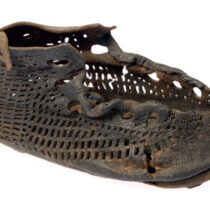Vitreous materials manufacture was a “high teen” technology which first started in the Near East and Egypt and later spread to the Aegean. Vitreous materials were appreciated for their resemblance to precious stones which were considered to have special properties: they were imbued with beneficial magic. With time, however, they became even more appreciated for the very magic that was involved in their manufacture: the dull, colourless raw materials were transformed in the kiln into a brilliant artefact. The manufacture of first faience and blue frit and later glass meant that precious objects could become available not only to the elite but to almost all social classes. The royal courts remained the centres of production since it was they who could afford the first class technicians and the best raw materials as well as high aesthetic standards. Faience could be made anywhere, while blue frit and glass were made in specific countries in the Near East and Egypt from whence they could be exported to other countries – thus widening Bronze Age trade/exchange networks.


